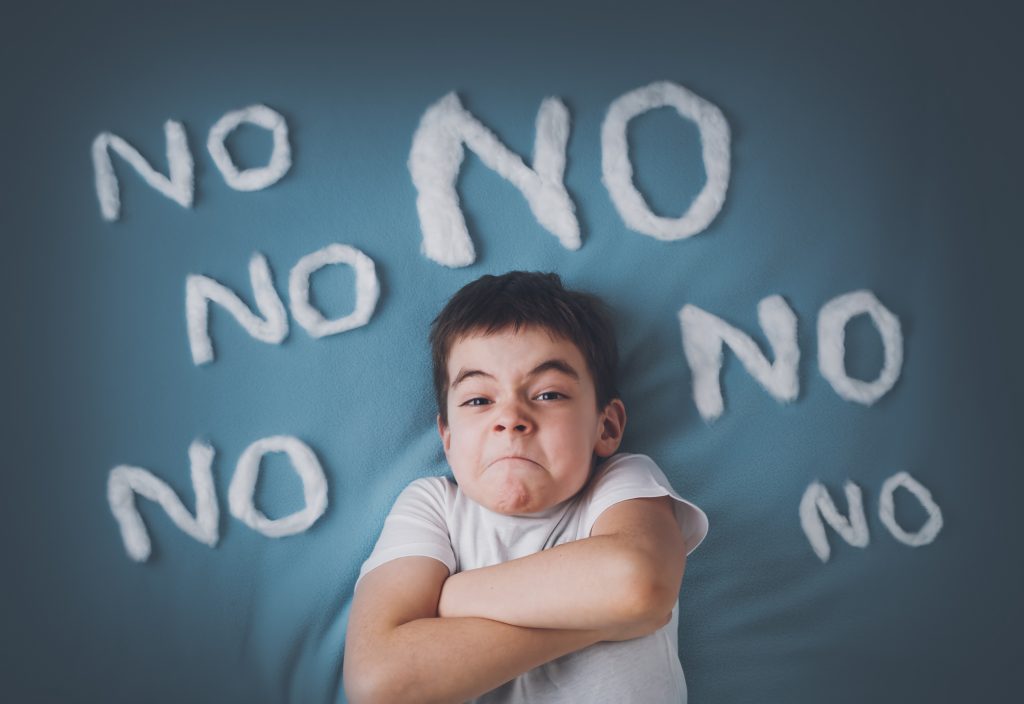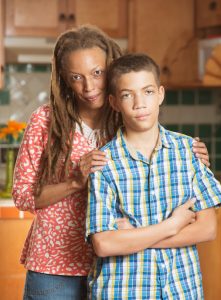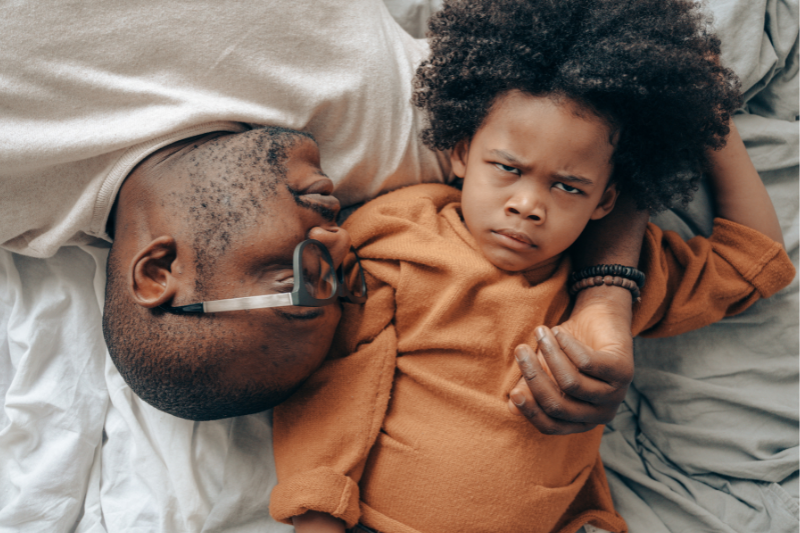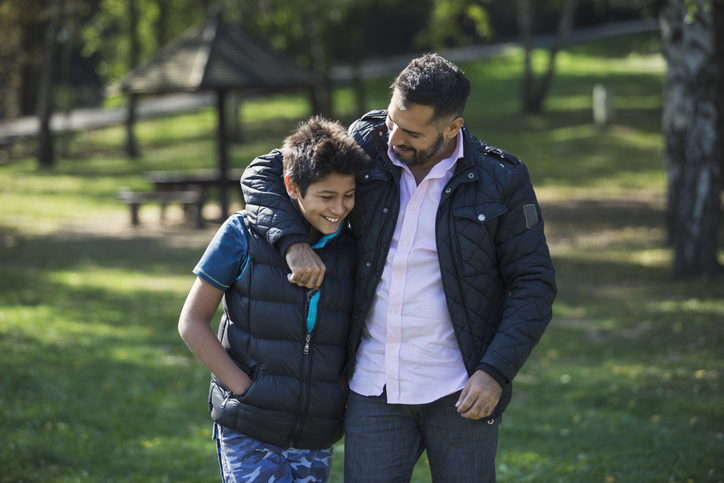When Kids with ADHD Have Oppositional Reactions: Moving past ‘No’ with the PAUSE program
 With all of the frustration, disappointment and restriction children and teens with ADHD are feeling these days, it’s even harder for them to self-regulate at school or at home. They may lose their temper more quickly, say inappropriate things, and refuse requests to finish chores or stop gaming. How can you respond to these oppositional reactions with strategies beyond yelling, taking things away, or banishing them from your sight? What are some choices that promote stability in the home and connection in the parent-child relationship? My PAUSE program–Plan to Accept, Understand, Set Limits and Encourage–can help you and your child better connect, communicate and find solutions.
With all of the frustration, disappointment and restriction children and teens with ADHD are feeling these days, it’s even harder for them to self-regulate at school or at home. They may lose their temper more quickly, say inappropriate things, and refuse requests to finish chores or stop gaming. How can you respond to these oppositional reactions with strategies beyond yelling, taking things away, or banishing them from your sight? What are some choices that promote stability in the home and connection in the parent-child relationship? My PAUSE program–Plan to Accept, Understand, Set Limits and Encourage–can help you and your child better connect, communicate and find solutions.
‘No’ – A familiar story
 Recently, I was in my office with Kieran–an eighth grade boy who was complaining about being bored after school to his mom, Tara, and me. “There’s nothing to do except gaming, and you only let me do that for an hour. What else am I supposed to do?” His mom gently suggested going back to some activities that had previously interested him—guitar lessons, indoor soccer, swim team, improvisational theater classes. “No, no, no.” His mom turned to me and said: “I used to do this to my mom. She called it ‘Shoot ‘em up, and knock ‘em down.’ There’s never a right answer.” I instantly wondered if ‘No’ meant ‘Forget about it’ or ‘I’m not sure and need to think about it.’ Indoor soccer and theater were hard ‘No’s.’ Guitar and swimming were more of an ‘I’ll think about it.” I asked Kieran why he doesn’t just say that, and he shrugged, “I don’t know…I just can’t think about all that stuff at once.” Saying ‘No’ flat out like that gives him space to think about something without any pressure.
Recently, I was in my office with Kieran–an eighth grade boy who was complaining about being bored after school to his mom, Tara, and me. “There’s nothing to do except gaming, and you only let me do that for an hour. What else am I supposed to do?” His mom gently suggested going back to some activities that had previously interested him—guitar lessons, indoor soccer, swim team, improvisational theater classes. “No, no, no.” His mom turned to me and said: “I used to do this to my mom. She called it ‘Shoot ‘em up, and knock ‘em down.’ There’s never a right answer.” I instantly wondered if ‘No’ meant ‘Forget about it’ or ‘I’m not sure and need to think about it.’ Indoor soccer and theater were hard ‘No’s.’ Guitar and swimming were more of an ‘I’ll think about it.” I asked Kieran why he doesn’t just say that, and he shrugged, “I don’t know…I just can’t think about all that stuff at once.” Saying ‘No’ flat out like that gives him space to think about something without any pressure.
ADHD and oppositional reactions
With working memory and/or processing speed challenges, kids with ADHD often feel overwhelmed—emotionally, cognitively and/or socially. Biologically, they lack adequate amounts of dopamine and norepinephrine in their brains. This deficiency makes it difficult for people with ADHD to process and recall information efficiently and keep up with all of the activity around them. In addition, people with ADHD frequently struggle to articulate these mostly unconscious cognitive processes. What most kids tell me is that they simply feel flooded and agitated. They try to muddle through and manage these feelings at school or with friends. However, by the time they arrive home, they don’t feel obligated to hold it together any more. As Sal once told me, “I’m not going to be suspended from my family.” He feels safe enough with his caring parents to shut down and push boundaries. There’s also more flexibility in creating whatever space he needs to process information at a pace that works for his uniquely wired brain.
What ‘NO’ means to your child or teen
A ‘No’ might be a response to what your child or teen may grasp as a demand rather than a request. Before you investigate what ‘NO’ really means, reflect on how you ask your child to do something or engage them in a task. Invitations, doing something alongside them (being a body double) and noticing their efforts contribute to better cooperation. Find a calm moment and ask them about ‘NO.’ Take out your curiosity, and gather some information. Is saying ‘NO’ about setting limits, being contrary, slowing things down or something else? Maybe it’s a combination of things. Brainstorm alternatives to ‘No’ that include coming up with a few words or phrases to use when they need time to think about something.
Preparing ahead for oppositional behaviors
 Nobody likes meltdowns, explosions or arguments. Kids with ADHD have told me repeatedly that they feel bad about themselves after these outbursts, and many parents also regret what they’ve said or done. But, in moments of high emotion, people naturally stop listening and quickly move to reactivity. Instead of being surprised every time your youngster pushes back or refuses something, understand that these behaviors are a natural part of growing up and exploring independence. Expect that these incidents will occur, and rely on a strategy for when they do. It’s the resistance and the combativeness that wears families down and really exhausts parents. My PAUSE program—Plan to Accept Understand Set Limits and Encourage–assists you in creating that strategy.
Nobody likes meltdowns, explosions or arguments. Kids with ADHD have told me repeatedly that they feel bad about themselves after these outbursts, and many parents also regret what they’ve said or done. But, in moments of high emotion, people naturally stop listening and quickly move to reactivity. Instead of being surprised every time your youngster pushes back or refuses something, understand that these behaviors are a natural part of growing up and exploring independence. Expect that these incidents will occur, and rely on a strategy for when they do. It’s the resistance and the combativeness that wears families down and really exhausts parents. My PAUSE program—Plan to Accept Understand Set Limits and Encourage–assists you in creating that strategy.
Responding to oppositional reactions with the PAUSE program:
‘Plan to Accept, Understand, Set Limits and Encourage’
1. Plan (Plan ahead with options):
Focus on making a plan to cope with the pattern of anger for yourself and your child rather than deal with its changing content. Otherwise, you’ll be playing Whack A Mole. In a quiet moment, make a list of what you can easily do to stay grounded. If you are dysregulated, you won’t be able to respond effectively or help your youngster calm down. Whether it’s going to the bathroom to collect yourself for a few minutes or getting a glass of water or opening a window, break up the action in a non-threatening way. This re-centering needs to be your initial reflexive step to slow down the fast-paced action. Once you’ve clarified this for yourself, sit with your child or teen and ask them what helps them regroup. Follow up by asking how much time they need for this. Write down their options, and post the list in their room or in the kitchen.
2. Accept (Nurture and acknowledge):
 Stop trying to convince your child or teen of anything. Rather, accept where you both are in a given moment. Remember, their listening stopped when they became activated, and they want to be seen and heard by you. Acknowledge what they are saying with reflective listening: “I heard you say this, is that right?” When they feel that you are paying attention–instead of correcting them for cursing at you or justifying why you called the school about their F in English–they will start to settle. It may be tense and uncomfortable, but you can do this. You’ve probably handled a lot of other unpleasant situations before!
Stop trying to convince your child or teen of anything. Rather, accept where you both are in a given moment. Remember, their listening stopped when they became activated, and they want to be seen and heard by you. Acknowledge what they are saying with reflective listening: “I heard you say this, is that right?” When they feel that you are paying attention–instead of correcting them for cursing at you or justifying why you called the school about their F in English–they will start to settle. It may be tense and uncomfortable, but you can do this. You’ve probably handled a lot of other unpleasant situations before!
3. Understand (Practice compassion):
As tough as it can be, empathy is what’s called for when kids, especially neurodivergent kids, are distressed. Kids and teens with ADHD often feel overwhelmed. Their thinking brains and weaker executive functioning skills simply cannot manage their heightened emotions. They are acting out because they lack the resources to do anything different in those moments.  Neurodivergent kids need caring adults to dig deep and find some compassion, rather than exploding about how they should get their act together. When a child is resistant, oppositional and intransigent, many parents feel desperate to regain authority and establish stability. Parents often do this by taking things away from their kids. But while punishments may offer short-term relief, they don’t bring long-term success. Avoid saying things like, “I’m taking away your phone for 3 days. You can’t talk to me that way.” Turn it around and say, “You have not earned the privilege of using your phone with that language. When you can go for 3 days without cursing, you’ll get it back. That’s the agreement we have.” Relying on appropriate incentives is what shifts negativity to cooperation.
Neurodivergent kids need caring adults to dig deep and find some compassion, rather than exploding about how they should get their act together. When a child is resistant, oppositional and intransigent, many parents feel desperate to regain authority and establish stability. Parents often do this by taking things away from their kids. But while punishments may offer short-term relief, they don’t bring long-term success. Avoid saying things like, “I’m taking away your phone for 3 days. You can’t talk to me that way.” Turn it around and say, “You have not earned the privilege of using your phone with that language. When you can go for 3 days without cursing, you’ll get it back. That’s the agreement we have.” Relying on appropriate incentives is what shifts negativity to cooperation.
4. Set limits (Clear rules with family meetings to foster collaboration):
The goal is to help kids with ADHD develop their executive functioning skills for self-regulation, engaging in interpersonal connections, and achieving goals. It’s a natural part of living to become angry, to want to get your own way, and to avoid disappointment. However, it’s not okay to be aggressive about these. Punishment doesn’t teach any lasting skills, and it rules by fear. We want our kids to be motivated to make other choices. Logical consequences, on the other hand, allow you to set limits and use meaningful incentives as motivators. You place ‘have-to’s’ before ‘want-to’s.’ The trick is staying steady in the face of your child or teen’s displeasure, and following through. In a family meeting or a quiet moment, make collaborative agreements about actions and words that are unwelcome.
5. Encourage (Focus on the present and moving forward):
 Once the storm has passed, focus on the present moment. What needs to happen NOW to move beyond its wreckage? This is not a time to teach any lessons. The situation is still too raw for your child or teen, and such a conversation may trigger the outburst all over again. You may want to talk about your upset and let them know how they have messed up. But, will this serve them to learn the skills they need and strengthen your relationship? They need encouragement rather than blame at this moment. Talk about the next move to get on with things instead. Later that day, or some time tomorrow, casually wonder about the take-aways from what happened. Was there anything each of you regretted? How would you like to deal with that type of behavior in the future? These questions open up conversation, explore options and validate positive engagement. Be patient with yourself and your family as you incorporate this model into your daily lives. Everybody has a shorter fuse right now so it may take longer to get this going. That’s okay. It’s one step at a time!
Once the storm has passed, focus on the present moment. What needs to happen NOW to move beyond its wreckage? This is not a time to teach any lessons. The situation is still too raw for your child or teen, and such a conversation may trigger the outburst all over again. You may want to talk about your upset and let them know how they have messed up. But, will this serve them to learn the skills they need and strengthen your relationship? They need encouragement rather than blame at this moment. Talk about the next move to get on with things instead. Later that day, or some time tomorrow, casually wonder about the take-aways from what happened. Was there anything each of you regretted? How would you like to deal with that type of behavior in the future? These questions open up conversation, explore options and validate positive engagement. Be patient with yourself and your family as you incorporate this model into your daily lives. Everybody has a shorter fuse right now so it may take longer to get this going. That’s okay. It’s one step at a time!
Read more blog posts:
- Cooling Down Conversations in Neurodiverse Families: De-escalate and do-over with ‘WAIT-Now’ and ‘Take Back of the Day’
- Negative Memory Bias and ADHD: Tips to Help Kids and Youth with ADHD Remember the Positives
- Tone of Voice Awareness in Neurodiverse Families: How to practice self-regulation in family conflicts
Watch on YouTube:
- ADHD and Oppositional Defiance (ADDitude Mag Q&A with Dr. Saline)
- Anger Management with ADHD (ADDitude Mag Q&A with Dr. Saline)
- How to Get Your Teens to Open Up (WWLP 22 News interview with Dr. Saline)
